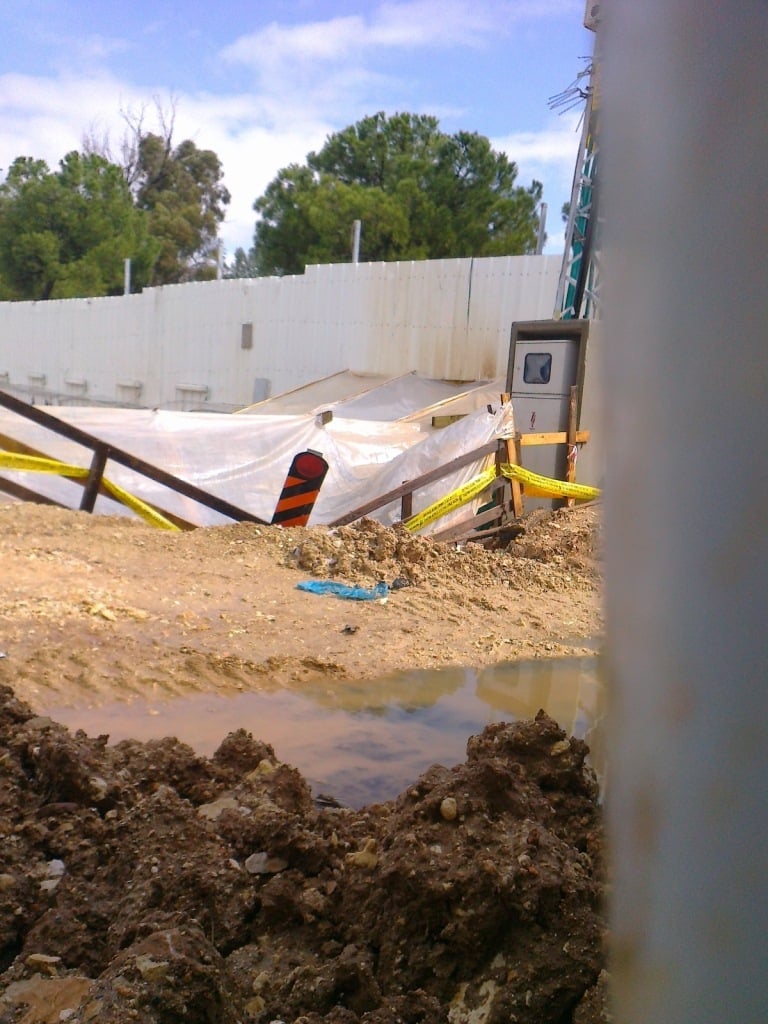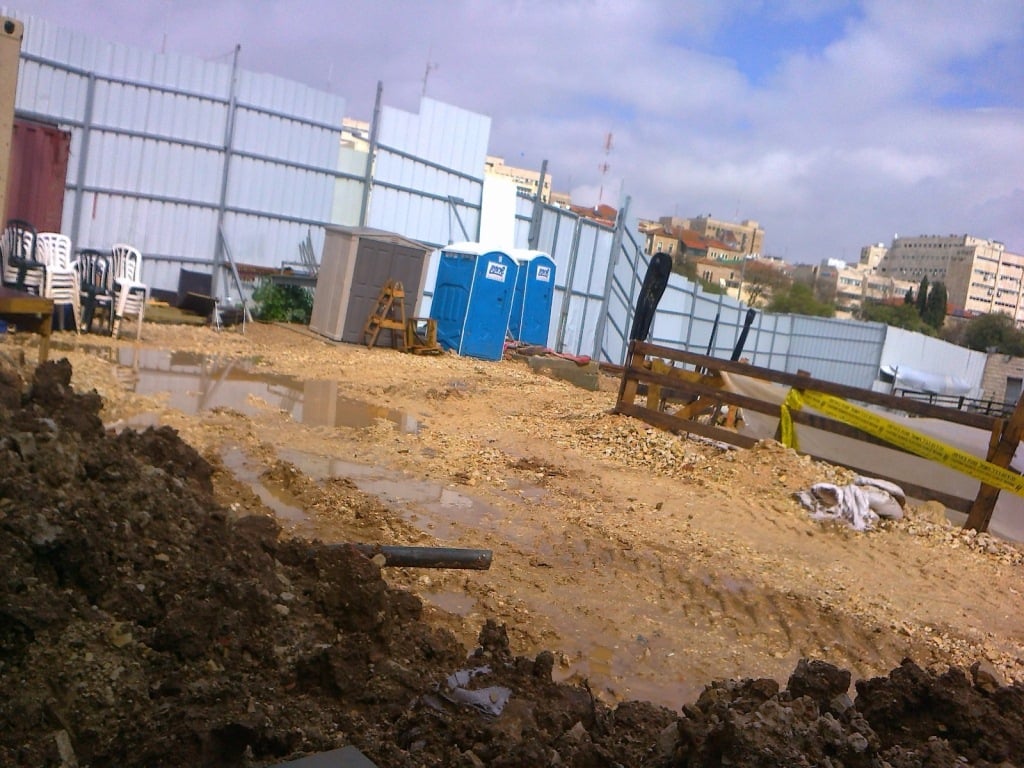March 26, 2012, Jerusalem, New York - New photographic and video evidence made public today for the first time by the Center for Constitutional Rights (CCR) indicates that controversial archeological excavations by the Israeli Antiquities Authority (IAA) have continued this month on the ancient Mamilla cemetery in Jerusalem. The Los Angeles-based Simon Wiesenthal Center (SWC) seeks to erect a “Museum of Tolerance – Center for Human Dignity” on the site. The new evidence strongly suggests that the site still contains archaeological artifacts and human remains, contrary to SWC claims that bedrock has been reached on all portions of the site.
“Incredibly, the SWC and Israeli authorities continue to desecrate this ancient cemetery, ostensibly in the name of tolerance. Not only does this dishonor the descendants of those buried in Mamilla, it also reinforces the second-class citizenship of all Palestinians. It is time that Israel and the SWC heed the calls of prominent religious figures, human rights advocates, eminent archeologists and people all over the world to end this sacrilege,” said CCR President Emeritus Michael Ratner, who co-signed a recent letter to the SWC opposing the construction.
In 2010, CCR filed petitions with several United Nations officials on behalf of descendants of individuals buried in the cemetery. The petition argues that the IAA and the Simon Wiesenthal Center’s highly secretive removal of thousands of human remains during excavations and infrastructure work on the site demonstrates a lack of respect for Palestinian cultural heritage and human rights and for the dignity of the deceased and their living ancestors.
The current excavations are being conducted under cover of a plastic tarp, in a pit which has been dug several meters below the floor of the construction site bordering the remaining part of the undisturbed cemetery. The IAA excavation pit is within a fenced enclosure in the south-west perimeter of the larger SWC construction site. The inner enclosure also features high voltage electricity supply for excavation equipment in the pit and portable toilet facilities for on-site workers, as evident in the photos and video.
On March 1, 2012, prior to these revelations, the Center for Constitutional Rights and the Campaign to Preserve Mamilla Jerusalem Cemetery sent a personal letter to Rabbi Hier of the SWC urging him to stop construction of the Museum in a section of the ancient Mamilla cemetery. The letter suggested that alternative options be considered and requested a meeting with Rabbi Hier to discuss the issue. It was copied to the Board of the SWC and foundations that support its work and to the Mayor of Jerusalem, Nir Barkat, urging him to intervene to stop the controversial project. Neither Rabbi Hier nor Mayor Barkat have responded to the letter.
“This important historical, cultural and religious site has witnessed a terrible offense, which appears to be continuing as Israeli Antiquities Authority excavations persist. Rabbi Hier must realize the grave precedent he is setting by building in a historic Muslim cemetery, and agree to a different location in the interest of mutual respect and tolerance in the Holy Land,”said Rashid Khalidi, Edward Said Professor of Arab Studies at Columbia University and signatory to the letter to Hier.
The letter also details the range of opposition that the project has faced, including a public petition signed by nearly 10,000 individuals from around the world, Human Rights Council resolutions, a letter from 84 respected archaeologists decrying the archaeological practices employed on the site, a resolution by the Central Conference of American Rabbis opposing the project, and the opposition of numerous prominent Israeli scholars.
In appealing to Rabbi Hier’s conscience, the letter stated: “The interests of peace, justice and tolerance dictate that you gracefully withdraw from this contentious site…We invite you to display tolerance by supporting efforts to make the Mamilla cemetery into a monument for all of those buried there over many hundreds of years. We believe nothing would send a more powerful message than the Simon Wiesenthal Center…joining others in honoring the cultural and archeological importance of the cemetery to the history of the Holy City of Jerusalem.”
Photographs showing the IAA inner enclosure and excavation pit are attached; a video showing the same part of the site may be accessed at: http://blip.tv/center-for-constitutional-rights/excavation-at-mamilla-cemetary-6038052. The letter to Rabbi Hier is available here. The Petition, Addendum and other documents are available at www.mamillacampaign.org and http://www.ccrjustice.org/ourcases/current-cases/mamilla.
IAA excavation pit inside SWC construction site covered with plastic tarp, supplied with dedicated electrical current for operating heavy machinery and surrounded with warning tape.

IAA excavation pit inside SWC construction showing inner enclosure wall and portable toilets rented for use by IAA teams onsite.

The Campaign to Preserve Mamilla Jerusalem Cemetery was initiated by the petitioners, and is a wholly civil, volunteer initiative with no political coloring. All 60 individual petitioners are descendants of 15 of Jerusalem’s most prominent and longest established families and have no relation with previous individual or institutional claimants in Israeli courts. The petition was also supported by 16 human rights non-governmental organizations, based in Israel and the Occupied Palestinian Territory, including Jerusalem.
Attachments
The Center for Constitutional Rights works with communities under threat to fight for justice and liberation through litigation, advocacy, and strategic communications. Since 1966, the Center for Constitutional Rights has taken on oppressive systems of power, including structural racism, gender oppression, economic inequity, and governmental overreach. Learn more at ccrjustice.org.

